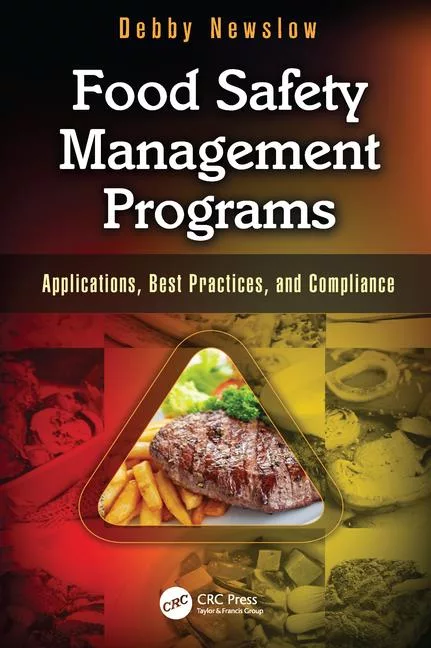How Restaurant Operators Can Comply with FDA's Menu Labeling Law: Part 1

LeoPatrizi/E+ via Getty Images
People are increasingly returning to dine-in restaurants, and take-out meals from such establishments continue to remain popular. This growing reliance on restaurant food raises questions about the nutritional quality and health risks of menu items. Restaurant foods are usually higher in saturated fat, sodium, and calories, raising the risk of obesity and heart disease. To promote public health and assist consumers in making informed food choices at the point of purchase, the U.S. Food and Drug Administration (FDA) introduced Menu Labeling Requirements on December 1, 2014, in accordance with the Affordable Care Act. These requirements also help restaurant operators ensure that the nutritional quality and composition of their menu items are verified.
The Menu Labeling Requirements direct covered restaurant chains and similar food retail establishments to provide the general public with consistent, accurate, concise, detailed, and clear nutrient and calorie information for standard menu items, as well as food on display and self-service foods listed on menus and menu boards. The Menu Labeling Requirements benefit not just the general public, but also covered foodservice establishments. Prior to the introduction of these requirements, foodservice establishments with many locations struggled to meet menu labeling rules because such rules differed by state. The regulations have made things easier for foodservice establishments by bringing uniformity to menu labeling. Furthermore, by complying, foodservice establishments can demonstrate the commitment of food and beverage operators to public health protection.
Before digging into the requirements, it is helpful to take a look at some of the terms used in menu labeling. Restaurant-style food, menu, menu boards, and covered establishments are just a few of the terms.
"Covered establishments," as per the regulations, are foodservice or similar establishments with 20 or more sites serving restaurant-style food, operating under the same name regardless of ownership, and offering substantially similar menu items. Covered establishments must comply with menu labeling standards. Restaurant-style food is sold in the following foodservice establishments:
- Quick-service, fine dining, coffee shops, casual dining, or any other type of sit-down restaurants
- Salad bars with self-serve food
- Bakeries, delicatessens, or ice cream shops, as well as drive-through or takeaway outlets
- Food counters at movie theatres and amusement parks
- College and university foodservice establishments—considered covered establishments as long as they meet the covered establishment criteria
- Food sold through vending machines (with exceptions).
Foodservice and similar establishments that do not meet covered establishment criteria are excluded from menu labeling regulations, but may register voluntarily if they desire to comply.
The term "menu" or "menu board" is also defined in FDA's Menu Labeling Requirements. According to the law, menus are the primary writing of a covered establishment that customers use to make an order decision. Kids' menu, lunch menu, dinner menu, breakfast menu, brunch menu, beverage menu, afternoon tea menu, and home delivery menu are all examples of a menu. If the establishment uses any other type of written material that displays regular menu items and their pricing and from which the consumer may order, such as brochures or tabletop menus, it is also considered primary writing. Furthermore, if the foodservice establishment uses menu boards, such as free-standing or wall-mounted panels, to display standard menu items and their pricing, then they are also considered primary writing.
Businesses Excluded from Compliance
Certain businesses are excluded from having to comply with the Menu Labeling Requirements. Food trucks, planes, and trains, as well as establishments where the principal business is other than providing food, are not recognized as covered establishments and are excluded from the menu labeling rules. Meals served in schools as part of a government-sponsored lunch or breakfast program are also excluded.
Looking for quick answers on food safety topics?
Try Ask FSM, our new smart AI search tool.
Ask FSM →
How Can Covered Establishment Register?
To avoid fines, all covered foodservice and related establishments must comply with menu labeling standards. Restaurant operators must fill out the menu labeling registration form (FDA 3757), which is available on the FDA website, to register. The location, phone number, and email address of the foodservice establishment, as well as the personnel in charge of implementing the regulations, must be provided. The trade name and mailing address for each unit must also be given.
It is critical to appoint professional and experienced personnel to oversee the implementation of the Menu Labeling Requirements, to communicate with FDA as needed, and to supply any information requested by FDA. Operators must re-register within 60 days of the current registration's expiration date. FDA does not normally send re-registration notices.
The Menu Labeling Requirements encompass three main requirements: calorie information, a succinct statement, and an availability statement.
Calorie Declaration
To begin, covered foodservice establishments and similar establishments serving restaurant-style food must post a calorie count for each standard menu item listed on the menu or menu board. However, the manner in which calories appear on the menu is determined by how the meal is served and sold. Calorie information must appear next to the name or price of the item to which it refers, as well as on signage close to the food on display and self-service food, such as salad bar food.
Aside from calorie count declaration, the law requires covered establishments to post statements regarding portion sizes on their menus or menu boards. The regulations allow calorie counts to be posted in a column or string format. An example of a string format is shown below:
Margarita Pizza: Small (10") 600 Cal, Medium (12") 800 Cal, Large (14") 1,000 Cal
Jalapeno (25–45 Cal)
An example of a column format is shown below:
Margarita Pizza: Small (10") 600 Cal, Medium (12") 800 Cal, Large (14") 1,000 Cal
Toppings |
Added Cal |
||
|
Small |
Medium |
Large |
Jalapeno |
25 |
35 |
45 |
Succinct Statement: Daily Calorie Intake Statement
Another requirement is that covered establishments must post a succinct statement about recommended daily calorie intake at the bottom of the menu or menu board. This will help consumers in understanding the calorie information presented on menus and menu boards in the context of a total daily diet. Succinct statements help consumers understand the calorie information presented on menus and menu boards in the context of a total daily diet because they state the general amount of total daily calories that are used for nutritional advice.
The succinct statement must be clearly and conspicuously posted at the bottom of each page of the menu and at the bottom of the menu board directly above, below, or beside the nutrition information statement.
An example of a succinct statement is below:
"2000 calories a day is used for general nutrition advice, but calorie needs may vary."
For a Kids' Menu:
"1,200 to 1,400 calories a day is used for general nutrition advice for children ages 4–8 years, but calorie needs vary."
Statement of Availability and Nutrition Information
In addition to calorie declaration and succinct statement, the law requires covered establishments to post a statement of availability at the bottom of the menu or menu board. It must be posted immediately above, below or beside the succinct statement in a clear, concise, and easy-to-read format. A statement of availability states that written calorie and nutrition information for standard menu items is available upon request from the customer. An example is shown below:
"Additional nutrition information available upon request."
The law mandates that foodservice establishments must provide customers with nutrient information upon request, such as total calories, calories from fat, total fat, saturated fat, trans fat, cholesterol, sodium, total carbohydrates, fiber, sugars, and protein for all items on the menu or menu boards. Nutrient information should be presented in a column or string format.
Determining Calories and Nutrient Content
To obtain nutrient information, covered establishments can refer to cookbooks, recipes from companies and suppliers, and packaged food labels. It is critical to remember that when FDA requests nutritional values, covered establishments must be able to demonstrate that these values were obtained from a reputable source.
Another way to determine the nutrient content is to submit food item for testing at an ISO 17025-accredited laboratory. This type of testing takes into account all factors, such as ingredients and cooking methods, making it one of the most trustworthy sources for determining nutritional values. Nutrient profile in certain foods differs depending on the cooking method used. However, the cost of laboratory analysis for multiple menu items may be prohibitively expensive for foodservice operators.
When a standardized recipe for a specific standard menu item is unavailable, foodservice operators must calculate and use approximations. FDA requires covered establishments to disclose information on what methods were used to calculate calorie information and nutritional values for standard menu items. The covered establishment must also guarantee that the method and quantity of the ingredient used, as well as the overall portion of the dish, are consistent with the factors used to calculate calories and nutrient values. The accuracy of such information provided is also verified. It should be noted that once the calorie and nutrient information has been identified, the covered establishment must ensure that food items are prepared in accordance with the methods and procedures used to determine nutrient information, as FDA may request such information. FDA may also request the recipe for the dish that was used to calculate calories and nutritional value. Such information must be provided within 4–6 weeks in the form of a signed and dated statement.
When calculating nutritional values, foodservice operators must ensure that all relevant information about menu items are taken into account, as incorrect nutritional information can lead to misleading information, which can lead to enforcement actions. Foodservice establishments may face fines if the calorie and other nutrient information are found to be incorrect. It is critical to note that the records used to calculate calorie and nutritional values, such as cookbooks and recipe sheets, must be kept at the branch or corporate office until the food item is sold as a standard menu item. When determining calories, do not count calories that do not exist. For example, if a 2-ounce sauce bowl is only three-quarters full, only the calories for that amount should be listed.
Covered establishments must also round the total calories, fat, cholesterol, sodium, and protein when posting calorie and nutrient information. Guidelines for rounding these values are presented in the following subsections.
Values of Total Calories
- If calories are less than 5, then calories can be expressed as zero
- If calories are less than 50 per serving, then calories can be rounded to the nearest 5 increment (i.e., 23 becomes 25)
- If calories are more than 50 per serving, then calories can be rounded to the nearest 10 increment (i.e., 102 becomes 100).
Values of Total Fat, Saturated Fat, and Trans Fat
- If total fat is Less than 0.5 gram, it can be expressed as zero (i.e., 0.44 becomes zero)
- If total fat is between 0.5 and 5 grams, it can be rounded to the nearest 0.5 g increment (i.e., 2.76 becomes 3)
- If total fat is more than 5 grams, it can be rounded to the nearest 1-g increment (i.e., 44.83 becomes 45).
Values of Cholesterol
- If cholesterol is less than 2 mg, it can be expressed as zero
- If cholesterol is between 2 mg and 5 mg, it can be expressed as less than 5 mg
- If cholesterol is more than 5 mg, it can be rounded to the nearest 5-mg increment.
Values of Total Carbohydrate, Dietary Fiber, and Sugar
- If the value is less than 0.5 g, it can be expressed as zero
- If the value is more than 1 g, it can be expressed as "contains less than 1 gram" or "less than 1 gram"
- If the value is more than 1 g, it can be rounded to the nearest 1-g increment (i.e., 2.24 becomes 2).
Values of Sodium
- If sodium is less than 5 mg, it can be expressed as zero
- If sodium is between 5 mg and 140 mg per serving, it can be rounded to the nearest 5-mg increment (i.e., 124 becomes 125)
- If sodium is more than 140 mg, it can be rounded to the nearest 10-mg increment (i.e., 152 becomes 150).
Values of Protein
- If protein is less than 0.5 g, it can be expressed as zero
- If protein is more than 1 g, it can be expressed as "contains less than 1 gram" or "less than 1 gram"
- If protein is more than g, it can be rounded to the nearest 1-g increment.
If any identified nutrients, including calories from fat, are presented in insignificant amounts, then the regulation does not require foodservice operators to provide information for those nutrients that are present in insignificant amounts. If a simplified format is used to declare nutrients, the following statement must be written at the bottom of the list of nutrients:
"Not a significant source of [X]."
The [X] should be filled in with the name(s) of the nutrient(s) that are present in insignificant amounts.
It should be noted that an insignificant amount of a nutrient can be rounded to zero, with the exception of total carbohydrates, dietary fiber, and protein, which can be declared as "less than 1 gram."
Foodservice establishments that are not subject to the Menu Labeling Requirements but voluntarily register to comply are exempt from providing additional nutrient information to customers who request it. They must declare calorie information, which will be considered a nutrient content. If a claim for nutrient content or a health claim is made, then nutrient information for the nutrient that is the subject of the claim must be provided.
Foods Exempt from Calorie and Other Nutrition Labeling Requirements
Covered foodservice establishments are not required to post calorie information for certain types of food items. These include food items that are not listed on the standard menu but are available as daily specials, food items intended for market testing, food items sold by weight, special-order items, and modified meals. Temporary menu items are those that appear on the menu for less than 60 consecutive days or 60 non-consecutive days per calendar year, while food items intended for market tests or surveys appear on the menu for less than 90 consecutive days or 90 non-consecutive days per calendar year.
Condiments and similar food items placed on a table or counter also do not require calorie information. Cold prepared foods and cold-cut meats sold from behind a delicatessen counter (by weight, not by piece) that are not mentioned in the menu or menu board (i.e., non-standard food items) and require further preparation, such as reheating by the customer before eating, are likewise exempted.
Part 2 of this article series will discuss the physical parameters for menu displays and labeling, as well as the guidelines for variable items on a menu, to help restaurant operators comply with FDA's Menu Labeling Requirements.









